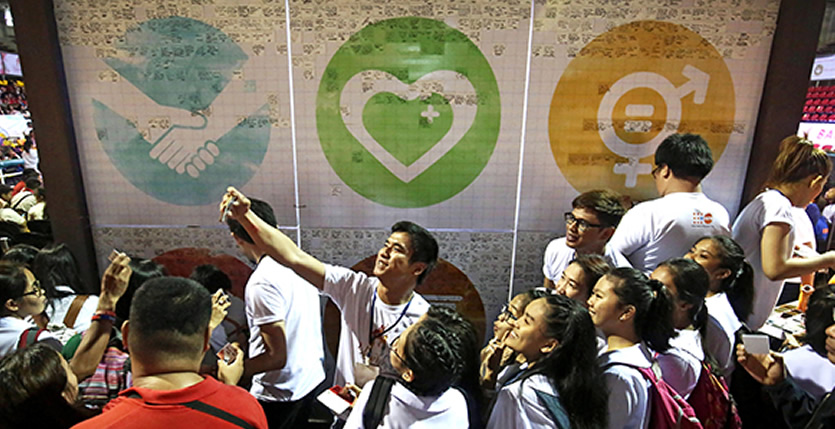The Philippines stands to benefit from its large population of young people, but to realize the demographic dividends, teenage girls must have access to quality education and youth-friendly health services as they prepare for working age, the United Nations Population Fund (UNFPA) said yesterday.
According to UNFPA country representative Klaus Beck, adolescent girls aged 10-19 currently make up 10 percent of the Philippines’ 100 million population.
“They hold enormous opportunity to transform the future of the Philippines but this can only happen if they have the right information and skills and are healthy and empowered to make informed decisions in life,” he said.

He issued the statement as World Population Day was celebrated yesterday.
Beck underscored the need to take action, citing a study spearheaded by the National Economic and Development Authority and supported by UNFPA, called the “Demographic Sweet Spot and Dividend in the Philippines: The Window of Opportunity is Closing Fast.”
The study showed the “high probability that the Philippines will miss the rare opportunity of additional economic growth.”
This is due to the relatively high fertility rate, or the average number of children by women, especially the poorest, and the relatively high unemployment rate, particularly among the youth sector.
Philippine celebration
World Population Day was commemorated at the Rizal Memorial Coliseum in Manila with the participation of some 2,000 teenage girls.
The event was spearheaded by the Commission on Population.
Health Undersecretary Gerardo Bayugo said there is a need to combine the efforts of the government and non-governmental organizations to address the rising teenage pregnancy in the country.
“We need to inspire our teenage girls… They need special care. Not only because they are the future. They will give life and nurture the future of our country,” Bayugo said.
This year’s event was highlighted by the launching of the “BABAEnihan” campaign which seeks national attention to issues that affect the future of young women.
It is a call for stakeholders to work together to expand opportunities for girls through investments in their education, health, and wellbeing.
Beck said this year’s theme about investing in adolescent girls is particularly relevant and urgent because teenage girls are among the marginalized sectors of society in terms of accessing social services that respond to their real needs.
He added that based on a new study of the UNFPA, adolescent fertility has gone down in all countries in the Asia-Pacific region, except for the Philippines.
Among the Filipino girls aged 15-19, about one in 10 has given birth.
Instruments for transformation
Vice President Leni Robredo also joined the call for more investments in the education and health of teenage girls, saying that women “are the hope for our nation’s transformation.”
“Embrace the soft power of your femininity. There is strength in being a girl. You are the hope for our nation’s transformation,” Robredo said in a speech, read by her eldest daughter Aika at the World Population Day celebration in Manila.
Robredo skipped the World Population Day celebration to attend her first Cabinet meeting in Malacañang.
Meanwhile, the Department of Education (DepEd) also enjoined schools and community leaders to make sure that female students are given an education that will empower them.
“Let us grow young females whose rights, needs, well-being, and potentials are not compromised or violated. Let us take strides to allow our young women to lead and have a voice that’s heard,” the agency said in a statement.
DepEd noted that despite the world’s achievements in gender equality, teenage girls remain vulnerable and compromised by social and economic disparities.
Source and image: Philstar
















Join the Conversation